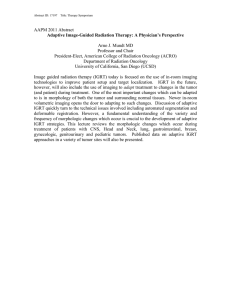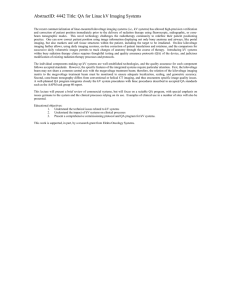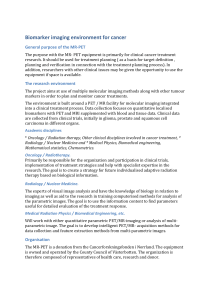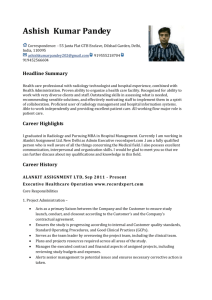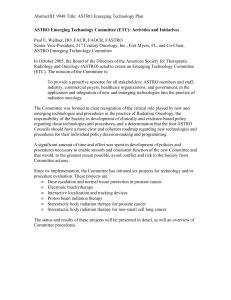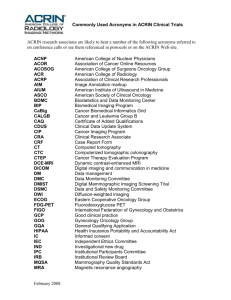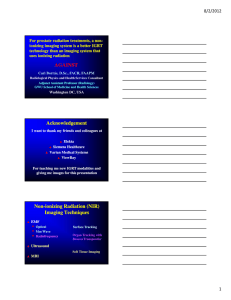ASTRO has been invited to participate in a physics education
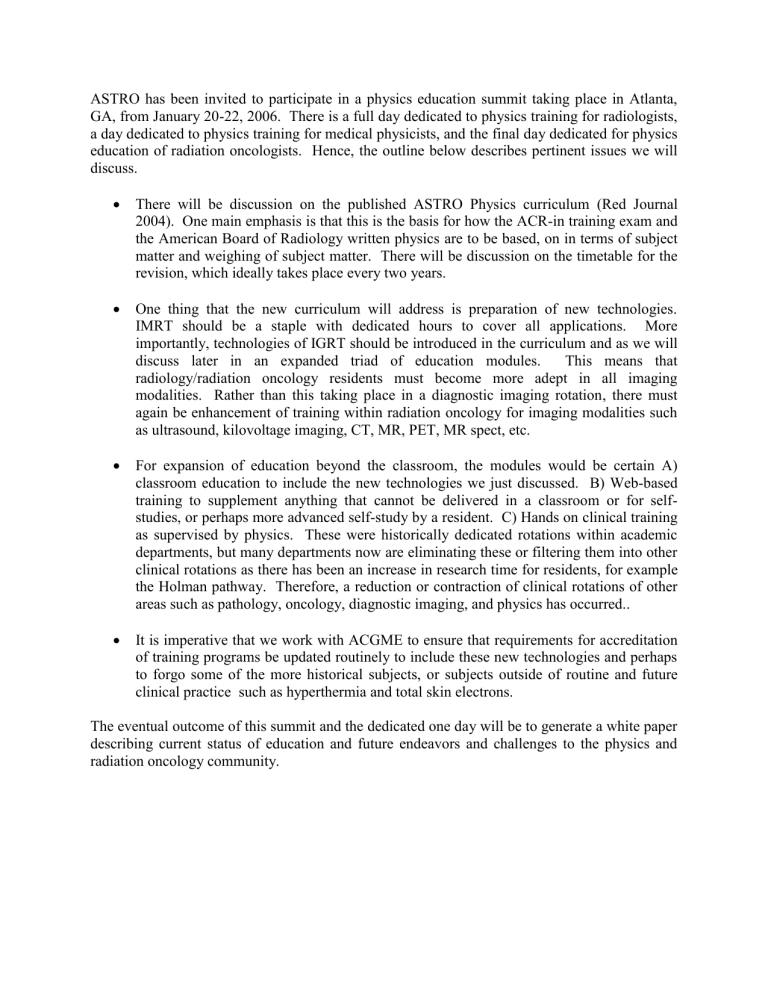
ASTRO has been invited to participate in a physics education summit taking place in Atlanta,
GA, from January 20-22, 2006. There is a full day dedicated to physics training for radiologists, a day dedicated to physics training for medical physicists, and the final day dedicated for physics education of radiation oncologists. Hence, the outline below describes pertinent issues we will discuss.
There will be discussion on the published ASTRO Physics curriculum (Red Journal
2004). One main emphasis is that this is the basis for how the ACR-in training exam and the American Board of Radiology written physics are to be based, on in terms of subject matter and weighing of subject matter. There will be discussion on the timetable for the revision, which ideally takes place every two years.
One thing that the new curriculum will address is preparation of new technologies.
IMRT should be a staple with dedicated hours to cover all applications. More importantly, technologies of IGRT should be introduced in the curriculum and as we will discuss later in an expanded triad of education modules. This means that radiology/radiation oncology residents must become more adept in all imaging modalities. Rather than this taking place in a diagnostic imaging rotation, there must again be enhancement of training within radiation oncology for imaging modalities such as ultrasound, kilovoltage imaging, CT, MR, PET, MR spect, etc.
For expansion of education beyond the classroom, the modules would be certain A) classroom education to include the new technologies we just discussed. B) Web-based training to supplement anything that cannot be delivered in a classroom or for selfstudies, or perhaps more advanced self-study by a resident. C) Hands on clinical training as supervised by physics. These were historically dedicated rotations within academic departments, but many departments now are eliminating these or filtering them into other clinical rotations as there has been an increase in research time for residents, for example the Holman pathway. Therefore, a reduction or contraction of clinical rotations of other areas such as pathology, oncology, diagnostic imaging, and physics has occurred..
It is imperative that we work with ACGME to ensure that requirements for accreditation of training programs be updated routinely to include these new technologies and perhaps to forgo some of the more historical subjects, or subjects outside of routine and future clinical practice such as hyperthermia and total skin electrons.
The eventual outcome of this summit and the dedicated one day will be to generate a white paper describing current status of education and future endeavors and challenges to the physics and radiation oncology community.



